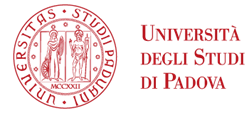
-
StatusCompleted
-
Status date2021-06-30
The project comprehends four main objectives:
1. Review of the state of the art of QKD protocols and selection of the ones suitable for the space environment.
2. Development of a QKD analytical model and its integration in a software.
3. Technological Roadmap.
4. Case Studies.
The first objective aims at reviewing the QKD protocols panorama and making an evaluation on their performances in order to select the ones suitable for the space environment, i.e. for ground-to-space or space-to-ground QKD.
The second objective investigates the design of an analytical model capable of describing the whole chain of a generic QKD ground-satellite link and outputting the secret key rate. It also deals with the design of a software which can implement the analytical model and lets the user interact with it through a GUI.
The third objective defines a roadmap to establish the required technological improvement which can overcome todays device limitations and push QKD to standardization in telecom.
The fourth and final objective describes up to 10 different case studies and uses both the analytical model and the software in order to test them in a real scenario application.
Key challenges are:
- he review of existing QKD protocols and the definition of the ones suitable for space environment.
- the design of an analytical model which can include most of the parameters involved in the definition of the secret key rate of a QKD link.
- the realization of a suitable software which integrates the model.
- the definition of an exhaustive roadmap which paves the way for the required technological improvement of the next 10 years.
- the definition of specific case scenarios which serve as a testbench and validation for the model and the software.
The developed model and software offer a versatile solution in order have a precise a-priori estimation of the secret key rate of a ground-satellite QKD link.
In other words, a user can evaluate the performances of a generic link and choose the optimal parameter set for the QKD scenario in order to maximize the bitrate of the secret key.
The designed analytical model can describe the entire process chain that allows the sharing of secrecy between transmitter and receiver. It includes models and formulas which describe physical conditions as well as the behaviour of devices (both optical and electrical). The software integrates the aforementioned model with a convenient GUI and uses a modular structure.
The software is developed in Python and is structured into 5 main blocks:
- GUI: allows to control the software.
- QKD Protocol Model: is the block which implements the analytical model and is subdivided into 3 sub-blocks:
o TX model: comprehends all the parameters of the transmitter.
o Channel model: comprehends all the parameters of the channel.
o RX model: comprehends all the parameters of the receiver.
- Orbit Propagation: is the block which simulates the condition of the satellite orbit which affects the performance of the QKD channel.
- Simulation Manager: is responsible for managing the inputs and outputs of the GUI, QKD Protocol Model and Orbit Propagation as well as the connection with the Performance Analysis block.
- Performance Analysis: is the last block of the chain which is responsible for the finalization of the analysis and the output of the results.
The project is divided into four main periods, one for each main workpackage. It started on 13th of September 2019 and its workpackages are divided as follow:
- WP1: 2 months
- WP2: 6 months
- WP3: 4 months
- WP4: 6 months
- WP5: 18 months
With the exception of WP5 which covers the whole project duration, every workpackage ends with a specific milestone:
- WP1: Progress Review 1 (PR1)
- WP2: Mid Term Review (MTR)
- WP3: Progress Review 2 (PR2)
- WP4: Final Review (FR)
Completed.





